Roots Revisited: In my last newsletter I ran a photo of some roots and invited their identification. I also said the roots were not edible. I still don’t know if they are edible but I have heard from a reader — Chris — who says they are edible. What does one do in a situation like that? More research.
In my new garden last year— I moved and downed sized — I planted an Ivy Gourd, a Bitter Gourd, and a Creeping Cucumber. The Creeping Cucumber did okay. The Bitter Gourd did well. The Ivy Gourd (Coccinia grandis) exploded. It grew off in all directions and where it touched the ground it rooted. Those are the roots you see above and to the right.
Ivy Gourd leaves and fruit are edible raw or cooked. When unripe the fruit is used like a crunchy cucumber. When ripe it turns bright red and is high in beta carotene. It can be used in sauces and the like or to make candy. The leaves were used recently in an experiment to reduce glucose absorption and worked well. It only took 20 grams of raw leaves to do that. And the root has been used to make an herbal medicine for diabetics (probably those with type II diabetes.) But are the roots edible?
Chris, wrote: “We eat the root after boiling. It has a distinct potato flavour, and if you get a good one – and those look like very good ones – they are quite starchy and not fibrous… I cannot remember where I heard the roots were edible! I’m sure I did as I’m quite careful about these things. I slice them up across the diameter like a carrot and boil them as long as a potato. I sometimes peel them and sometimes don’t. To me they have a distinctive potato-like flavor. The skinnier ones tend to be a bit stringy, the fatter ones not stringy, and firmer than a potato. I like the texture. After boiling I have sometimes mixed them with other vegetables and stir fried them. They’ve never made me sick and I have a very sensitive stomach. Mind you I rarely have enough to make a whole meal of them, preferring to mix one or two of them with other vegetables.”
Interesting. When I first moved to Florida — which is much different foraging environment than Maine — I studied with Dick Deuerling. When someone said something was edible and Dick didn’t know or didn’t think so he would say: “Let me watch you harvest it, let me watch you prepare it, let me watch you eat it. And if you’re still alive a couple of weeks from now I might consider it.” Now that I have a report of edibility of the Coccinia grandis roots I will investigate it more. That will take months because one needs to become comfortable with a potential food or different use and not rush into eating said. The caution is called for because the literature on root edibility seems lacking in English. For example Cornucopia II lists the species and edibility but does not include the roots. And as the roots have had some medicinal uses that, too, demands some caution when the leaves drop glucose and eating several ripe fruit might drop your blood glucose levels as well.
That said I can see several advantages to eating the roots of the Ivy Gourd if edible. It would mean the whole plant is edible. More so it will root significantly if given the right environment and attention. It’s also versatile: Edible leaves and fruit both unripe, ripe, raw and cooked. Adding the roots would be a nice touch. One of the good things about publishing a newsletter and being able to communication over the internet is that you can hear from people who have different experiences with different plants. There is always something to learn. To read more about the Ivy Gourd go here.
What is a tea? It can be everything from a comforting drink to medicine. Indeed, some teas made from spices are very good for your health. Turmeric or rosemary tea come to mind. There are certainly dozens of wild plants that can be used for tea. In fact we even have a species and varieties locally that is full of caffeine and antioxidants, the Yaupon Holly. But teas can be more than teas. As I teach in my classes teas can often be marinades and the material that is used to make the tea can also be used for flavoring when cooking vegetables or meats. They will flavor a squash as easily as a fish.
Besides caffeinated Yaupon Holly the non-caffeine Southern Wax Myrtle has been used a long time for tea though I think to be on the safe side it should be avoided by those who are pregnant. Local natives also smoked the leaves to keep insects at bay. Magnolia leaves have been used for tea and goldenrod. There’s one species of goldenrod that has a slight anise flavor and is the best of them all. An old stand by, of course, are pine needles for tea. Choose green needles and seep them (not boil, that drives off the Vitamin C.) They also have shikimic acid, which is the main (refined) ingredient in Tamiflu. Camphor seedlings also have shikimic acid as does Sweet Gum Bark and Sassafras. There’s tea, marinades and medicine around us if we know how and where to look.
Foraging Classes:
Sunday, January 17th, 2016, Mead Garden, 1500 S. Denning Dr., Winter Park, FL, 9 a.m.
Sunday, Jan. 24th, George LeStrange Preserve, 4911 Ralls Road, Fort Pierce, FL, 9 a.m.
Sunday, Jan. 31st, Jervey Gantt Recreation Complex, 2390 SE 36th Ave., Ocala, FL, 9 a.m.
Sunday, Feb. 7th, Red Bug Slough Preserve, 5200 Beneva Road, Sarasota, FL, 9 a.m.
Sunday, Feb. 14, Mead Garden,1500 S. Denning Dr., Winter Park, FL, 9 a.m.
Sunday, March 6th, Florida State College, south campus, 11901 Beach Blvd., Jacksonville, 9 a.m.
Sunday, March 13th, Mead Garden, 1500 S. Denning Dr., Winter Park, FL, 9 a.m.
Saturday, March 19, Colby-Alderman Park: 1099 Massachusetts Street, Cassadaga, 9 a.m.
Saturday, March 26th, Dreher Park, 1200 Southern Blvd., West Palm Beach, 9 a.m.
Sunday, April 3rd, John Chestnut County Park: 2200 East Lake Road, Palm Harbor, FL, 9 a.m.
Sunday, April 10th, Wekiva State Park, 1800 Wekiwa Circle, Apopka, Florida 32712. 9 a.m.
Sunday, April 17th, Bayshore Live Oak Park, 2200 East Lake Road, Port Charlotte, FL. 9 a.m.
Sunday, April 24th, Wickham Park: 2500 Parkway Drive, Melbourne, FL 9 a.m.
To learn more about foraging classes go here.
 All of Green Deane’s videos are available for free on You Tube. They do have ads on them so every time you watch a Green Deane video I get a quarter of one cent. Four views, one cent. Not exactly a large money-maker but it helps pays for the newsletter. If you want to see the videos without ads and some in lightly better quality you can order the DVD set. It is nine DVDs with 15 videos on each. Many people want their own copy of the videos or they have a slow service and its easier to order then to watch them on-line. They make a good gift for that forager you know. Individual videos can also be ordered. You can order them by clicking on the button on the top right of this page or you can go here.
All of Green Deane’s videos are available for free on You Tube. They do have ads on them so every time you watch a Green Deane video I get a quarter of one cent. Four views, one cent. Not exactly a large money-maker but it helps pays for the newsletter. If you want to see the videos without ads and some in lightly better quality you can order the DVD set. It is nine DVDs with 15 videos on each. Many people want their own copy of the videos or they have a slow service and its easier to order then to watch them on-line. They make a good gift for that forager you know. Individual videos can also be ordered. You can order them by clicking on the button on the top right of this page or you can go here.

Do you know what this wild edible is? You would if you read the Green Deane Forum. Photo by Green Deane
Want to identify a plant? Perhaps you’re looking for a foraging reference? You might have a UFO, an Unidentified Flowering Object, you want identified. On the Green Deane Forum we — including Green Deane and others from around the world — chat about foraging all year. And it’s not just about warm-weather plants or just North American flora. Many nations share common weeds so there’s a lot to talk about, such as the one to the left. There’s also more than weeds. The reference section has information for foraging around the world. There are also articles on food preservation, and forgotten skills from making bows to fermenting food. Recent topics include: Yard Weed? Not Quite Ginger. Blue Berries into January. Sweet Little Betsy. Ornamental Acorn Look Alike. Looks Like Something You Would Find In a Grocery Store. Amaranth? Conyza and Chlorophyll. Can Anyone Tell Me The Name of This Plant? NJ Biennial. Crepis Japonica Nutritional Information? So Much Free Food! Berries! What Kind Of Shrub Is This? Oxalis Corymbosa. Water Hyssop Recipes. Where To Get LUS Groundnut Strain? Is This Lambs Quarters? Small Herb, Solanum americanum, Winter Fruits in Sanibel, and Are These Plants Related to Canavalia maritima? You can join the forum by clicking on the button on the upper right hand side of this page.
This is newsletter 191.
To donate to the Green Deane Newsletter or website click here.

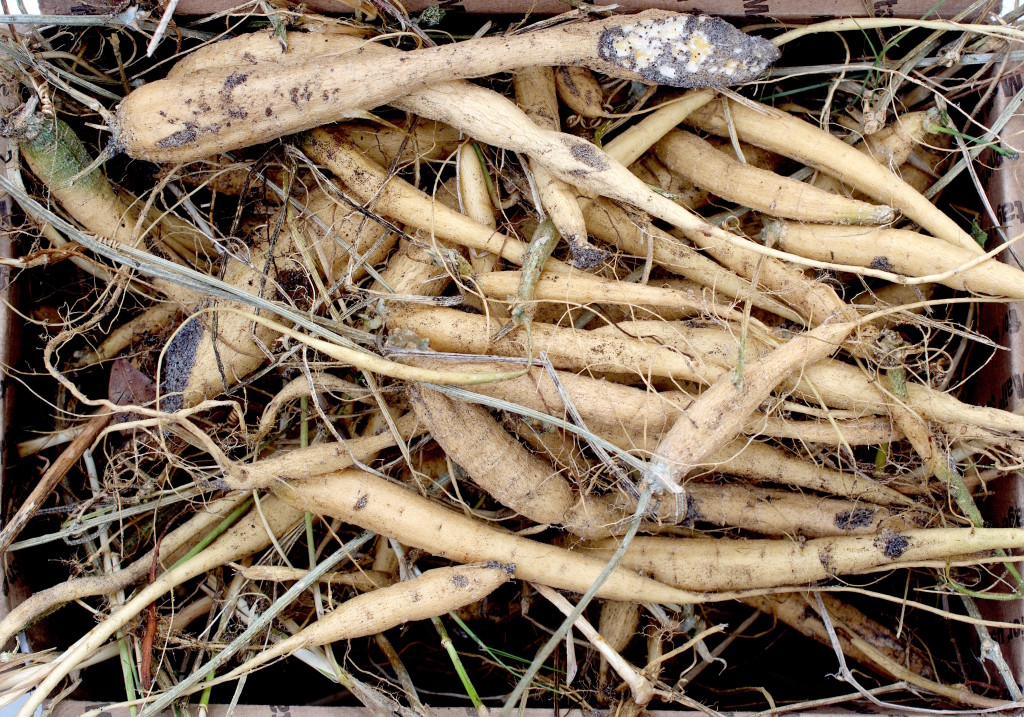
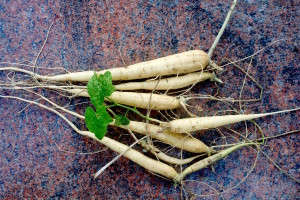
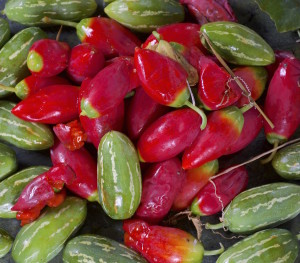
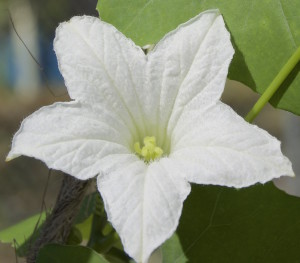
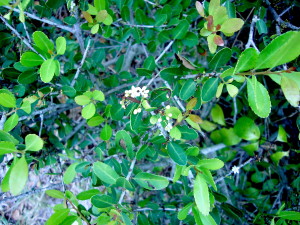
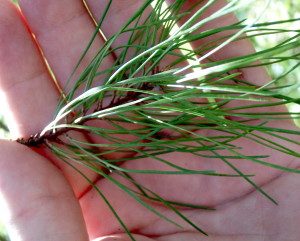
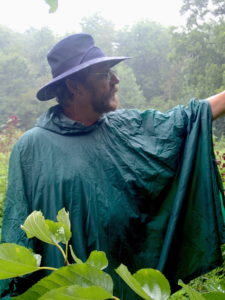

Deane,
I am a biologist and chemist, and I have been a follower for many years. I rely on your well founded information, as I constantly add to my knowledge of forraging.
Above you state, “They also have shikimic acid, which is the main (refined) ingredient in Tamiflu.”
This is simply not the case. Tamiflu has one active ingredient, Oseltamivir. Oseltamivir is not shikimic acid, not even close.
Keep munching on the green!
Tim
Thanks for writing. Shikimic acid is the base material for producing Oseltamivir. One of my regrets was they would not let me take chemistry when I was in high school. I hated high school. It was the worse six years of my life.
Love your website AND your sense of humor.
It is now in my garden spreading horizontally. It has been given the chance to climb as well – yes now it is blossoming with many five-petalled yellow flowers, several of which developing fruits. I thought I’d rather give the vernacular name “Ajjour or Aggour” for this cultivar a species like Ivy gourd. The Arab countries refer to this Cucumis sativus as “Gittha’a” – a name mentioned in the holy Koran when the followers of Prophet Moses (peace be upon him) requested him to pray God to grant them earth’s dietary products instead of what they used to eat.
In my garden, too, I’ve grown two types of herbal tea plants: Chamomile grown from tea bag or dry flowers, the other plant is Rosemary. The latter was bought from one of Carrefour moles of Doha (U.A.E.) as a young plant grown in a plastic pot. Both are now growing well here in our soil.
I do appreciate your remarkable scientific responses which come sometimes as a result from some comments. There is an urgent need for my people who are now running what is called – should be scientific – “National Dialogue” aiming to reach a well- documented scientific plan the fruit of which will be a new strong Sudan.
clevers is the plant in question!!